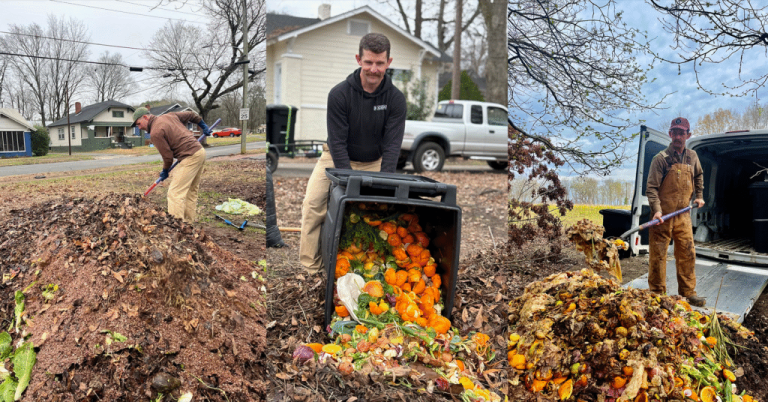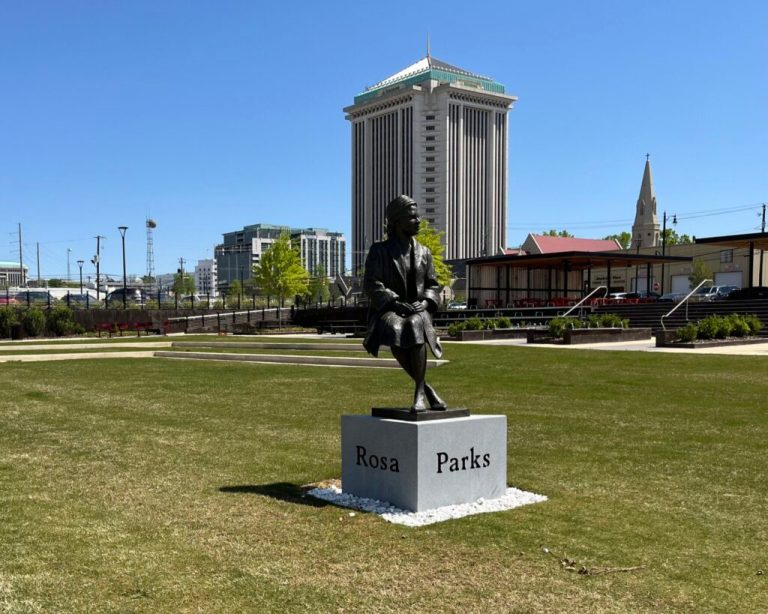Reviewed by: Cindy Hatcher
The heroes behind Alabama’s wilderness areas: A historical look
Reading time: 7 minutes
Sponsored

What do a President, scout, lawyer, physician, congressman and educator all have in common?
Folks like these supported campaigns to establish and expand wilderness areas in Alabama after the Sipsey Wilderness was created in 1975.
In our first installment about Alabama’s Wilderness Areas, we learned how a group of conservationists launched the national Eastern Wilderness movement and successfully established the Sipsey Wilderness.
Between 1977 to 1999, they more than tripled the size of congressionally-designated wilderness in the state.
Now, let’s look into the wilderness heroes that helped preserve Alabama’s wildest places: the Cheaha Wilderness, Dugger Mountain Wilderness and a larger Sipsey Wilderness.
Wilderness champion: President Carter

After the designation of the Sipsey Wilderness in 1975, conservationists were not planning to propose future wilderness areas in Alabama.
That all changed, thanks to the late President Jimmy Carter.
A big supporter of wilderness areas, Carter wanted the federal government to create an inventory of potential wild places to save like he did in Georgia.
During his first year in office, one of his actions was to order the Department of Agriculture to begin a process to evaluate all the roadless areas on federal lands.
This gave Congress the ability to identify and recommend wild places throughout the U.S. to become part of the National Wilderness Preservation System.
This one presidential action provided Alabama Wilderness advocates the wherewithal to establish two wilderness areas and double the size of the Sipsey Wilderness.
Cheaha Wilderness: A Boy Scout trail vs. scenic highway

Located in Clay County, within the Talladega National Forest and adjacent to Cheaha State Park, the 7,400-acre Cheaha Wilderness was made possible by Boy Scouts and a pair of passionate wilderness advocates who didn’t want a highway through Alabama’s highest wild ridge in Alabama.
Within the roadless mountain backcountry, local scouts developed the Odum Scout Trail along the stunningly beautiful ridgeline, according to “The Battle for Alabama Wilderness” by John Randolph.
By 1978, the trail was one of the most popular in Alabama, especially for Boy Scouts from Birmingham and Atlanta who had earned 30,000+ badges for completing the 7.5-mile wilderness trek.

Unfortunately for the scouts, the Forest Service had hatched plans in the 1950s to build a scenic drive through the Trail. When this was discovered by Randolph, who was a lawyer and member of the Alabama Conservancy (now Alabama Environmental Council), he teamed up with the Sierra Club’s Dr. Wally Retan, a physician, to stop the project in the mid-70s using the National Environmental Policy Act.
That lawsuit eventually stopped the ambitious road project that would have ruined the wilderness character of the region. By the late 70s and early 80s, President Carter’s roadless directive identified Cheaha as a possible Wilderness Area.
On January 3rd, 1983, the Cheaha Wilderness was signed into law—all made possible by Boy Scouts who built a trail, and a lawyer and physician who stopped its destruction.
Fun Fact: Two of the biggest supporters during the Cheaha Wilderness campaign in the 1980s were the Girl Scouts and local hunting groups.
Sipsey Wilderness: A local Congressman digs in

The most contentious project to expand wilderness in Alabama was in the Bankhead National Forest.
Once again, President Carter’s roadless directive opened the door for more wilderness—and that meant doubling the size of the Sipsey in Winston and Lawrence counties, primarily protecting the Thompson Creek, Upper Borden Creek and Montgomery Creek drainages.
In the 1980s, proposals to double the Sipsey Wilderness from 12,000+ acres to nearly 26,000 acres, were opposed by Howell Heflin, the popular senior senator from Tuscumbia.
Supporters of expanding the Sipsey Wilderness did have its own champion, Representative Ronnie Flippo.
The congressman from Florence introduced and passed Sipsey Wilderness expansion legislation in the House three times — in 1982,1983 and 1986.

“If not for Ronnie Flippo up there in the Tennessee Valley just doggedly sticking to it, it wouldn’t have happened. He really dug in and stuck with it.”
Michael Leonard, Chair of Alabama Wilderness Coalition, now with The Conservation Fund
By 1988, Senator Heflin supported an expansion compromise. The legislation also designated 52 miles and 5000+ acres along the Sipsey Fork of the West Fork River as Alabama’s only Wild and Scenic River.
Dugger Mountain – Educator leads grassroots campaign

The last Wilderness Area added in Alabama was the 8,947-acre Dugger Mountain Wilderness in 1999. Located in the Talladega National Forest near Jacksonville, Alabama, Dugger Mountain spans Calhoun and Clebourne counties, about 80 miles east of Birmingham.
Francine Hutchinson, a popular local nature educator and her husband Bruce, symbolized the grassroots campaign to preserve one of Alabama’s highest mountains.
Together the couple visited the proposed wilderness area 200+ times, collecting and documenting over 750 species of trees, shrubs, flowers and ferns.

In addition to the biological studies, the Hutchinsons who were also board members of the Alabama Environmental Council, enlisted the support of scientists, natural historians and locals to contribute studies and support.
They pretty much used the same model that established the original Sipsey Wilderness in 1975.
Remarkably bi-partisan, the Dugger Mountain proposal was first supported by Democrat Rep. Glen Browder and then future Republican Governor, Rep Bob Riley. In the U.S. Senate, Senator Jeff Sessions championed the legislation.
In Randolph’s “Battle for Alabama Wilderness” book, Pete Conroy, another key local wilderness leader who worked at Jacksonville State University and was President of the Alabama Environmental Council, summed up the whole Dugger Mountain campaign succinctly:
“We did this one right!”
Why Wilderness expansion matters

Today, Alabama’s three wilderness areas total 42,218 acres, which is free and open to the public.
Why did the expansion of these rare, wild, old growth forests and roadless spaces matter?
For the Sipsey Wilderness, we preserved the wildest and some of the last free-flowing creeks and rivers in Alabama.
Both Cheaha and Dugger Mountain Wildernesses are home to the Pinhoti Trail, Alabama’s most famous pathway, which connects to the Appalachian Trail. They also provide us with the best mountaintop views in the state.
But all three wilderness areas have one thing in common: They connect us to our communities and natural areas found nowhere else.
Learn more and next installment

Want to learn more about Alabama’s three wilderness areas and how you can enjoy them?
Here are some resources:
- National Forests in Alabama — Know before you go, Wilderness info from the Forest Service
- Wild Alabama — Learn how to participate in wilderness events and stewardship activities
- Alabama Hiking Association — Information about the Pinhoti Trail that weaves through the Cheaha and Dugger Mountain Wildernesses
Next up — we’ll show how you can enjoy and protect these special wilderness places in Alabama.
Sponsored by:




